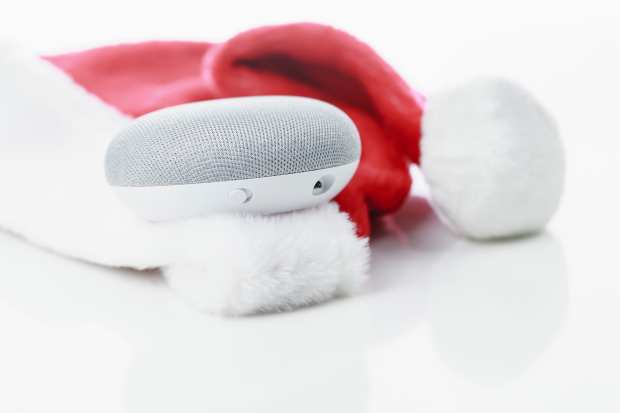Holiday Retail Trends Start To Take Shape

Now that summer is unofficially over comes the really interesting part of the year for retailers — the march toward the holiday shopping season. And the trends that promise to shape that season are emerging.
For starters, consider voice-assisted retail, and Google and Amazon.
The area of voice is becoming hotter and more sophisticated, foreshadowing a trend that will almost certainly have retail significance in the fourth quarter. Since Google launched its smart speaker artificial intelligence (AI)-backed voice assistant product Google Home in November 2016, the race for voice ecosystem dominance has been relatively consistent for the last three or so years. Amazon — which had a head start of almost exactly two years with its Echo/Alexa line — has been the leader in the market, with Google running as fast as possible in second place trying to catch up.
Voice Race
On the whole, it hasn’t been a close race. Though there have been occasions when it seemed Google might have some chance of pulling ahead, Amazon’s lead has remained fairly commanding and complete. As of early 2019, Alexa had 56,750 skills on offer in the U.S. market, compared to 4,253 Google Assistant Actions. As of the start of summer 2019, Amazon also led Google in placing its voice-activated assistant in far more third-party devices. Alexa is found in more than 60,000 smart home devices from 7,400 companies, whereas Google Assistant is found on about 10,000 devices from more than 1,000 companies.
However, if Google has been somewhat slow to make any significant strides at taking pole position in this race, it has held onto second place pretty consistently — and not for lack of serious challengers. Granted, Samsung’s Bixby was differently focused, and Apple’s HomePod/Siri combination has suffered from execution issues since it was announced, both of which made it easier for Google to remain Amazon’s main competition.
The U.S.-China trade war also promise to play a role this holiday shopping season. After the Trump administration added 15 percent tariffs to $112 billion of goods from China on Sunday (Sept. 1), China responded by imposing additional tariffs on U.S. goods.
Unlike previous tariffs, these will have a direct impact on “final goods,” including shoes and clothing, and could hit American household costs this fall. Additional tariffs on consumer goods are set to include toys and sports equipment on Dec. 15 — right in time for holiday shopping.
“Trump’s newest tariffs are bad news, but don’t expect consumers to start seeing the result of higher prices today,” said Chad Bown from the Peterson Institute for International Economics in Washington, according to the Financial Times. “It will take a bit of time for the more expensive clothes and shoes now being unloaded at the ports to make it on to store shelves and into online retailers’ warehouses.”
Consumer Confidence
A recent survey by the University of Michigan showed a drop in consumer confidence in August to its lowest level since Trump was elected. One in three respondents mentioned tariffs as a reason for concern.
Beacons, too, promise to play a bigger role this holiday shopping season, according to a fresh analysis. “Many retailers use beacons now, but they’re almost always hidden,” that report said, “There’s really no reason for beacons to be hidden. By being more transparent with in-store technology, brands can help dispel some of the negative connotations around ‘push marketing.’ Shoppers know they’re there and should have the option of communicating with the beacon for relevant content that helps them shop and gives those who want it a more streamlined experience.”
Those are just some of the holiday trends in play for 2019. The coming months will no doubt bring clarity on what else to expect.
